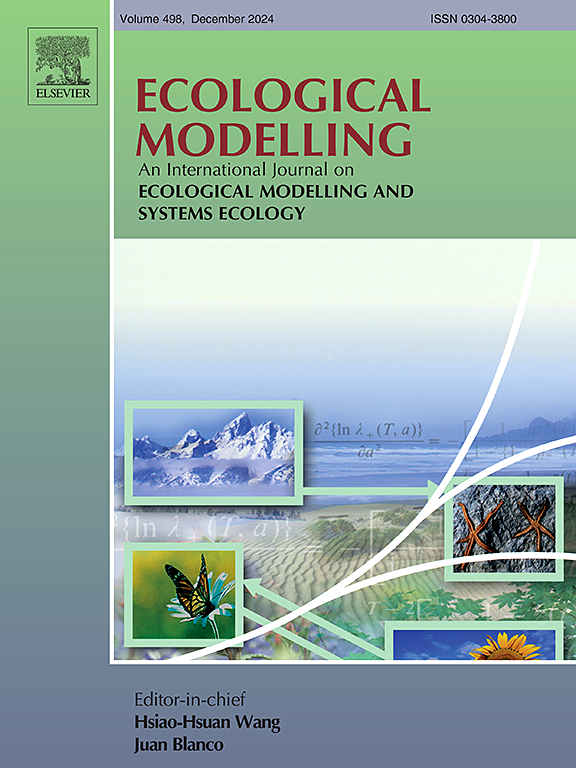An improved SIF-based GPP estimation method based on quantifying the joint effect of photosynthetically active radiation and temperature on LUE/SIFyield
IF 2.6
3区 环境科学与生态学
Q2 ECOLOGY
引用次数: 0
Abstract
Accurate measurement and estimation of ecosystem gross primary production (GPP) are essential for understanding ecosystem carbon dynamics. Solar-induced chlorophyll fluorescence (SIF) is a convenient predictor of gross primary production (GPP) due to their linear relationship. However, the different responses of light use efficiency (LUE=GPP/APAR) and SIF quantum yield (SIFyield=SIFtot/APAR) to climatic variables make GPP-SIF relationship complicated. In this research, a hyperbolic function f(PAR), a parabolic function f(T) and a synergy function f(PAR,T) are used to model the effects of photosynthetically active radiation (PAR) and temperature (T) on LUE/SIFyield, either separately or together based on field data from two different ecosystem sites on half-hourly or daily scales. Results show that the proposed synergy function can better predict actual LUE/SIFyield. Further, with the effect of PAR and T on LUE/SIFyield, the accuracies of SIF-based GPP estimation are improved when f(PAR,T) is included. This study provides an improved SIF-based GPP estimation method by quantifying the key roles of PAR and T on LUE/SIFyield.
求助全文
约1分钟内获得全文
求助全文
来源期刊

Ecological Modelling
环境科学-生态学
CiteScore
5.60
自引率
6.50%
发文量
259
审稿时长
69 days
期刊介绍:
The journal is concerned with the use of mathematical models and systems analysis for the description of ecological processes and for the sustainable management of resources. Human activity and well-being are dependent on and integrated with the functioning of ecosystems and the services they provide. We aim to understand these basic ecosystem functions using mathematical and conceptual modelling, systems analysis, thermodynamics, computer simulations, and ecological theory. This leads to a preference for process-based models embedded in theory with explicit causative agents as opposed to strictly statistical or correlative descriptions. These modelling methods can be applied to a wide spectrum of issues ranging from basic ecology to human ecology to socio-ecological systems. The journal welcomes research articles, short communications, review articles, letters to the editor, book reviews, and other communications. The journal also supports the activities of the [International Society of Ecological Modelling (ISEM)](http://www.isemna.org/).
 求助内容:
求助内容: 应助结果提醒方式:
应助结果提醒方式:


